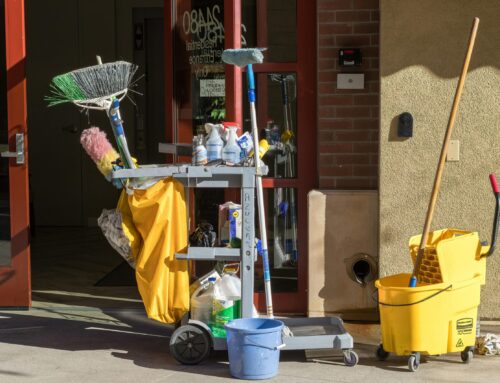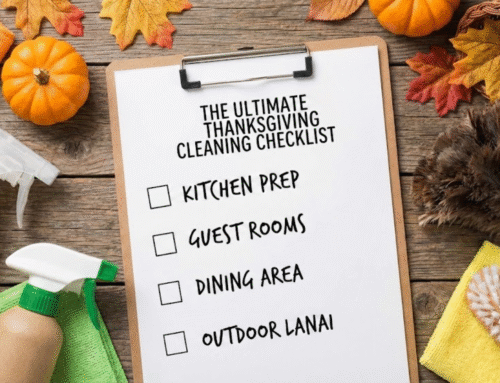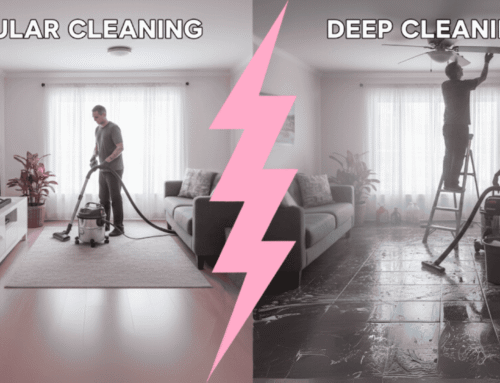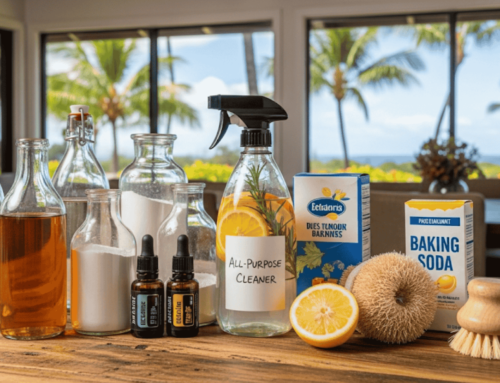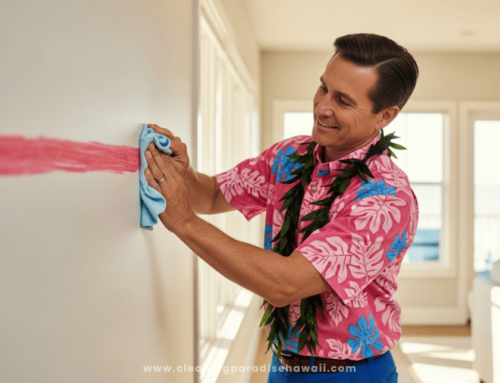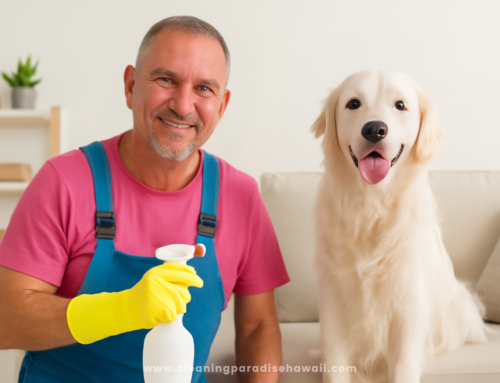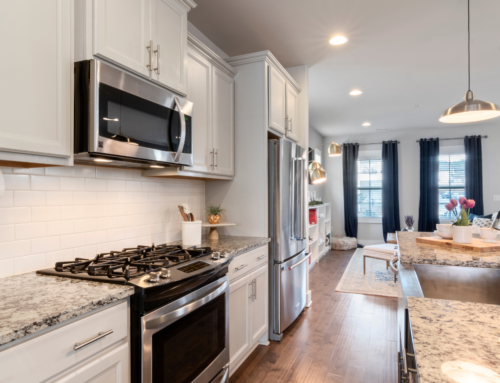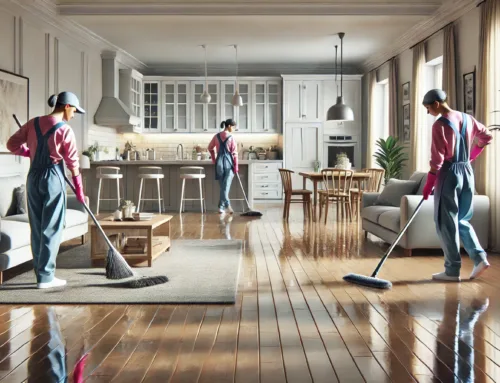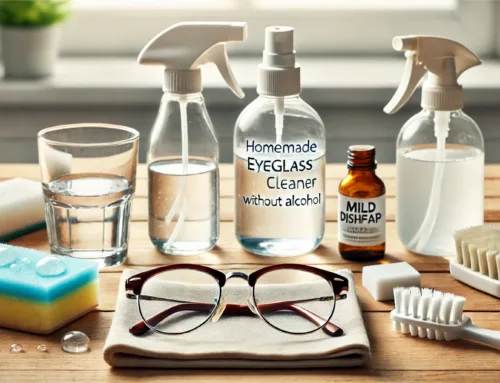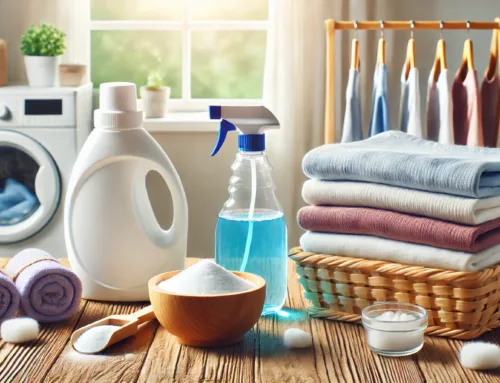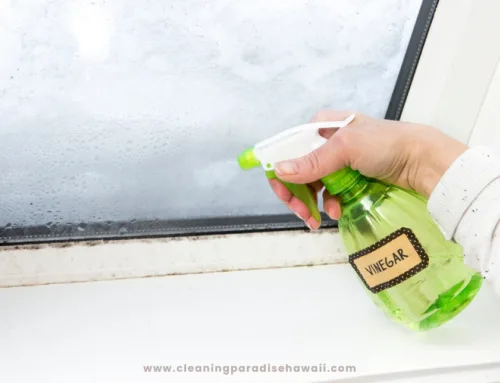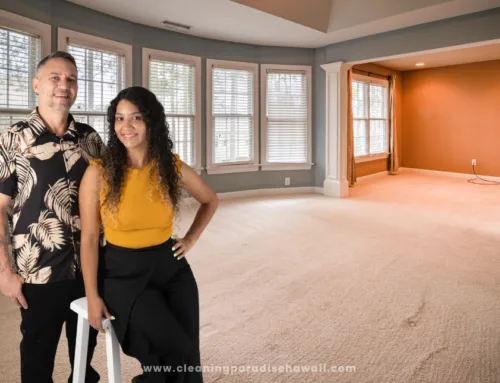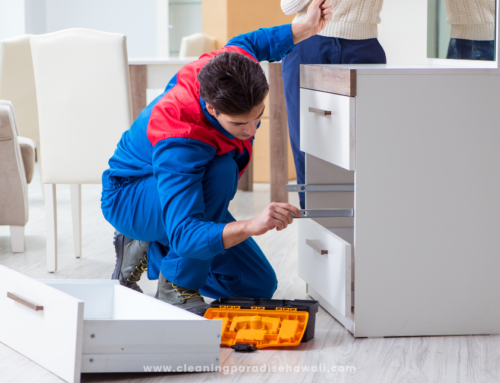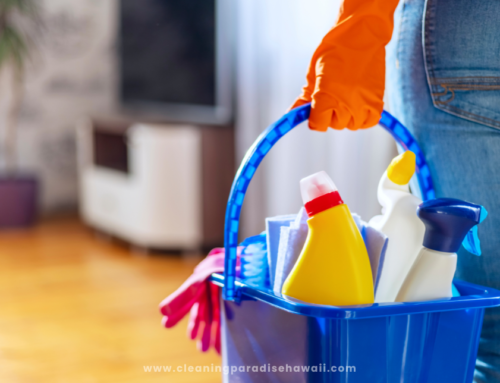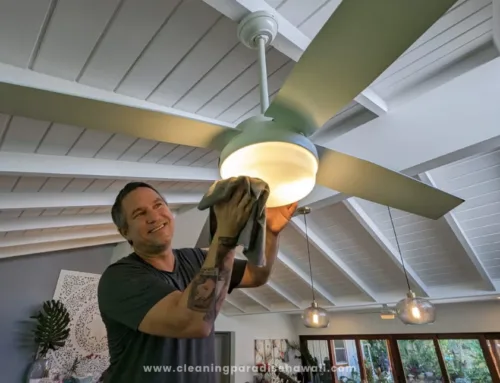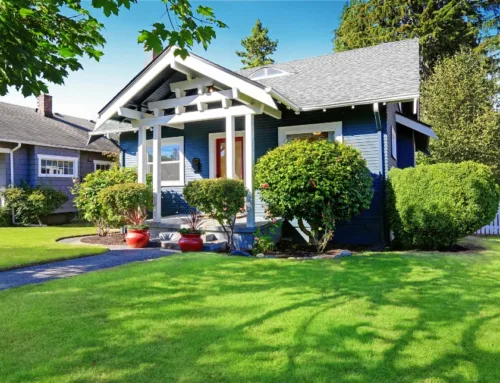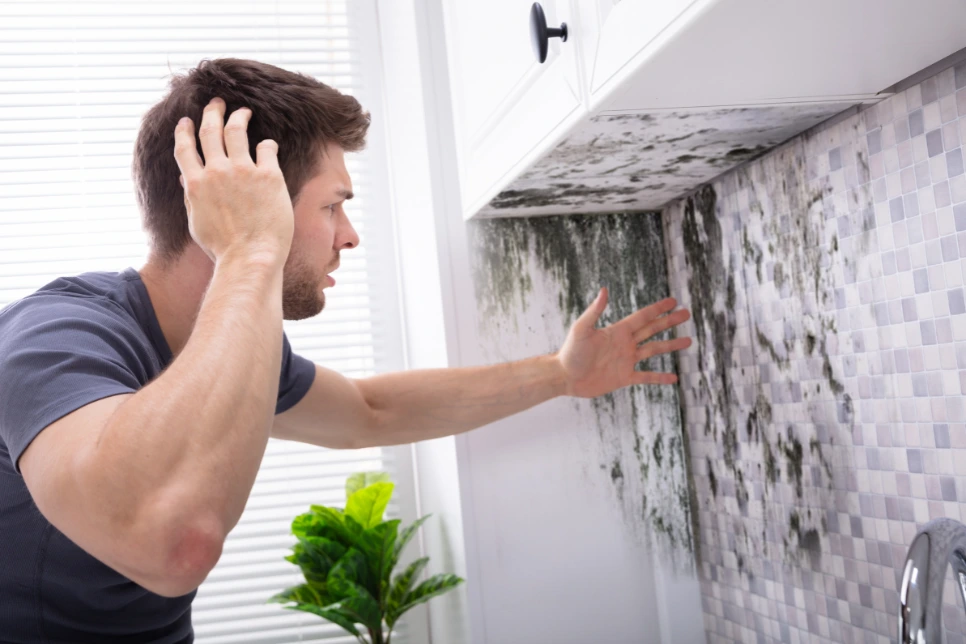
Many people dream of visiting Hawaii, but it comes with one factor that is frequently overlooked: the humidity. And though it’s a virtual playground for plants and animals, all that green life can also create an environment that is perfect for mold to take its most unwelcome encore. The last thing you need is to have your house get ruined due to mold, leading to health problems and unnecessary repairs!
Luckily, there are easy ways to prevent mold and humidity. And there’s a bonus! Here, in this guide, we will teach you how to prevent mold and humidity in your home using various methods and how to manage excessive moisture. Whether it’s something small, like a change in habit, or an investment such as professional cleaning services from Cleaning Paradise Hawaii, you can be assured that your house will remain safe, clean, and dry.
Understanding Mold and Humidity in Hawaii
Before we get into how to avoid mold and control humidity in Hawaii, let’s first focus on why it appears with such frequency in our homes.
Tropical Hawaii also means heat and humidity, thus moisture can be found just about everywhere. That nonstop dampness can lead to increased moisture in your home, especially in areas that aren’t well ventilated. Be it the bathroom, kitchen or even the attic – if there is too much moisture in a room, mold can take root rather nicely.
Signs of Mold and Humidity Issues
Spotting the signs of mold and humidity issues early can save you from a lot more trouble. Below are some of the most typical signs that your home is experiencing excess humidity or mold.
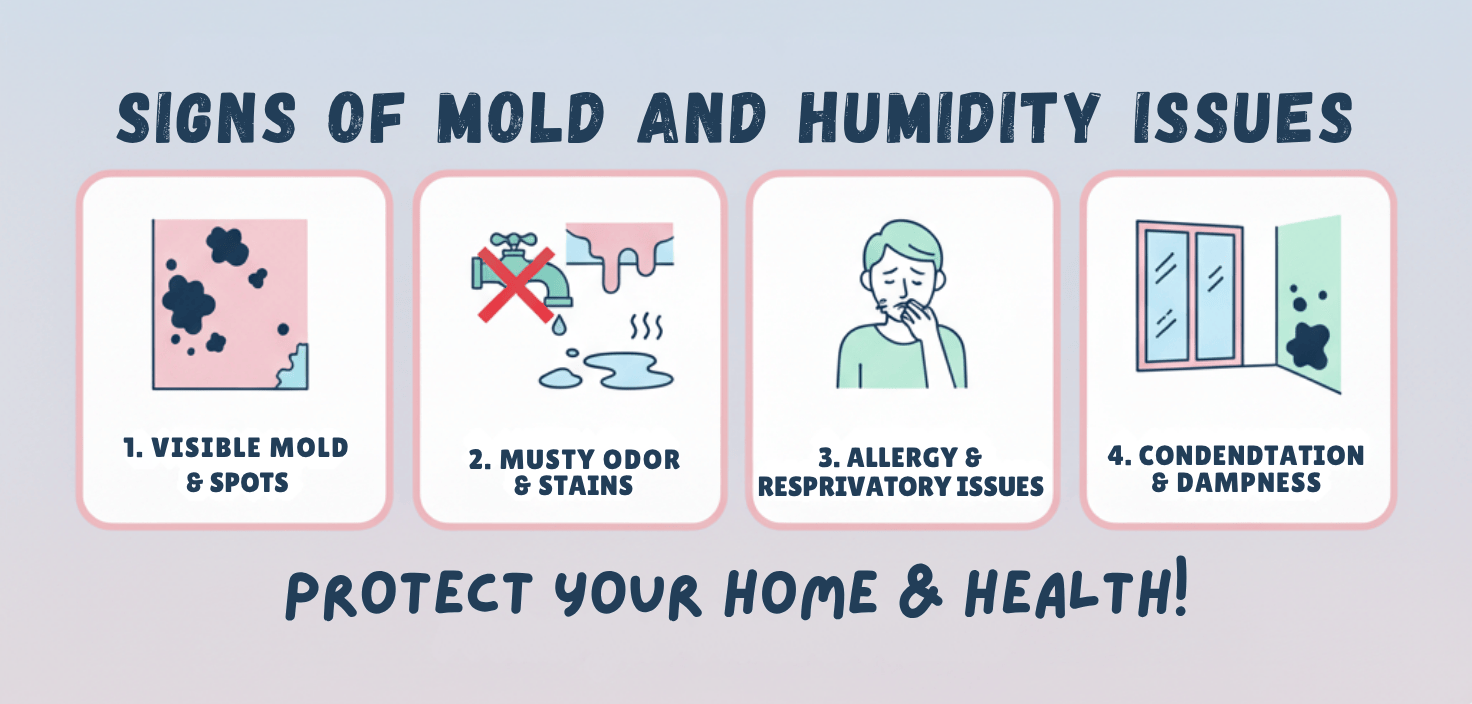
1. Musty Odor
One of the first symptoms that you may have a mold problem is an earthy, musty odor. Mold has its own smell, and if you detect the scent in closed-off rooms of your home, it’s often an early indicator that mold spores are colonizing somewhere out-of-sight. Trust your nose! If your house has a damp or musty odor, it’s time to check for mold.
2. Visible Mold
Some mold is easier to see. When visible, it can be seen as discolorations (dark spots or patches) on ceilings, walls, floors, and even furniture. Mold can be greenish or black, sometimes even white. Check for these spots in places prone to being humid, such as the bathroom, kitchen or laundry room. If you don’t, these patches can develop into larger growths and proliferate all over your home.
3. Condensation and Dampness
Windows, mirrors and walls with condensation are the most obvious symptoms of high humidity. If you find that moisture consistently collects on your windows, and you notice this occurring particularly on damp days or after hot showers, then it’s very likely the case that the air inside your home is too moist. This trapped water can soak through the walls and help mold to thrive.
4. Warped Wood or Peeling Paint
They also expand and can warp from moisture and humidity. When you start to see your wood floor, door frames, or furniture warping and cracking— it might be a sign that there’s too much moisture in the air. Peeling paint or wallpaper are also indicators of moisture in action on the surfaces of your home. Mold can also follow these symptoms, so it’s important to react fast.
Effective Ways to Prevent Mold Growth
Now that we’ve identified the problem, let’s talk about how you can prevent mold from taking root in your home. Here are some easy and effective strategies that can make a huge difference in reducing humidity and preventing mold growth.
1. Proper Ventilation
The first and most important step in preventing mold is improving airflow in your home. Without proper ventilation, moisture accumulates in enclosed spaces, providing mold with an ideal environment. Make sure that all rooms, especially the kitchen and bathroom, have adequate ventilation.
-
Open Windows: Whenever possible, open your windows to let fresh air in and reduce the buildup of humidity.
-
Exhaust Fans: Install exhaust fans in bathrooms, kitchens, and laundry rooms. These fans help remove excess moisture from the air, preventing it from settling on surfaces where mold can grow. If your bathroom doesn’t have an exhaust fan, consider installing one.
-
Attic Ventilation: Your attic can easily become a haven for moisture. Make sure your attic has proper ventilation, such as vents or a fan, to prevent moisture from accumulating and creating the perfect breeding ground for mold.
2. Use Dehumidifiers
Hawaii’s humidity is a challenge, but using a dehumidifier can make a big difference in controlling moisture levels. A dehumidifier works by pulling excess moisture out of the air, reducing humidity levels in your home.
-
Where to Place Dehumidifiers: Focus on areas of your home that are particularly prone to humidity, such as the bathroom, basement, or laundry room. Dehumidifiers can also be useful in bedrooms and living rooms during particularly humid seasons.
-
Maintaining Ideal Humidity Levels: The ideal indoor humidity level should be between 30% and 50%. If you notice condensation forming on windows or walls, your humidity level may be too high. Use your dehumidifier to bring it back to a healthier range.
3. Regular Cleaning
Keeping your home clean is one of the best ways to prevent mold from taking hold. Mold thrives in dark, damp environments, so regularly cleaning high-moisture areas will help keep it at bay.
-
Wipe Down Surfaces: Regularly wipe down surfaces in the bathroom and kitchen, especially after using the shower or cooking. Use a mild cleaner or a vinegar solution to clean the area. Don’t forget to clean the floor, especially around the toilet and sink.
-
Don’t Forget the Tiles: Mold can easily grow between tiles in bathrooms and kitchens. Make sure to regularly clean grout lines, especially in areas exposed to water.
-
Professional Mold Removal: If you’re dealing with significant mold issues, don’t hesitate to call Cleaning Paradise Hawaii. We specialize in deep cleaning services that target mold at its source, helping you create a healthier home environment.
4. Apply Mold-Resistant Sealants
An ounce of prevention is worth a pound of cure. Mold-resistant paints and sealants are a simple but effective way to protect your home from mold. These products create a barrier on surfaces that repels moisture and prevents mold growth.
-
Where to Use Sealants: Apply mold-resistant paint or sealants in areas that are most susceptible to moisture, such as the bathroom, kitchen, basement, and laundry room. If you live in a particularly humid area of Hawaii, consider using mold-resistant products throughout your home for added protection.
Maintaining Humidity Levels in Hawaii Homes
Now that you’re aware of how to avoid mold, let’s look at controlling the humidity levels inside your house. Shovel the walk after every snowfall Mildew is more than just gross from a visual perspective — it also wreaks havoc on your air quality. High humidity can lead not only to mold but also make your home feel uncomfortable. Here’s how to rein it in:
A. Monitor Humidity Levels
One of the best ways to determine if you’re working in high humidity is by monitoring your indoor humidity levels. You can easily do this by buying a hygrometer, which is a piece of equipment that measures the moisture in the air.
-
What’s the Ideal Humidity Level?
Your home should be between 30% and 50% humidity. But if your hygrometer is reading higher than that, it’s time to do something about the humidity.
B. Control Moisture Sources
Moisture sources within your house can help to promote humidity. Knowing where these issues are coming from can help you stay on top of humidity levels.
- Repair Leaks: Drippy pipes, roofs or windows let moisture into your home. Frequently inspect for leaks and seal them in to ensure water doesn’t enter.
- Unclog gutters: Once clogged with leaves, your home’s gutters can hold water against the foundation and lead to too much moisture in the house. Keep your gutters clean to prevent water from getting stuck near your home.
C. Landscaping Tips
Your property can affect the levels of moisture in your home, particularly if water pools near your foundation. The right landscaping can minimize how much moisture seeps into your home.
- Grade Your Yard: Ensure the earth surrounding your house slopes away from the building itself. This keeps water from your house so moisture accumulation is less likely.
- Trim Plants: If there are plants near your home, they can hold moisture against the walls if you don’t maintain them. Cut back any plants near your house so that they don’t create excess humidity.
Professional Mold and Humidity Control Services
While there are lots of things you can do to stop mold in its tracks and monitor humidity on your own, sometimes you just need a little professional help. That’s where Cleaning Paradise Hawaii comes into play.
Our team of professionals has access to the most recent inspection tools and removal technology to analyze your home for mold, get rid of and stop it from growing. We provide complete mold removal services and even give you advice on how to maintain a homes free of mold for years to come.
Bottom Line
Dealing with mold and moisture in Hawaii houses can be tough, but when you know what you are looking for and have the right tools for the job – You are in control. Follow the easy steps provided in this guide, and you’ll be able to keep your home healthy and dry so you can avoid having mold or moisture problems.
At Cleaning Paradise Hawaii we know that keeping your home safe, clean and healthy is important. Whether you’re seeking professional mold removal, humidity control or just some friendly advice, we’ve got your back. Contact us today to book an appointment or receive some advice on enhancing the air quality and humidity levels in your home.

